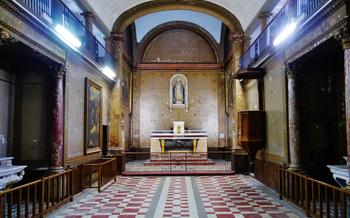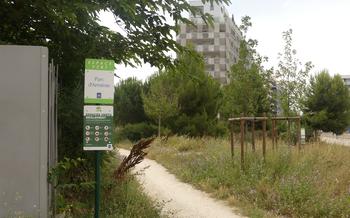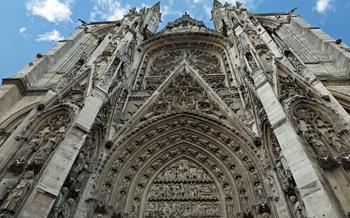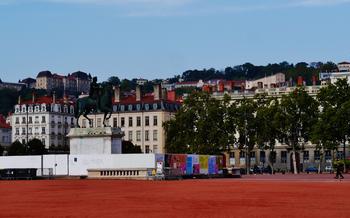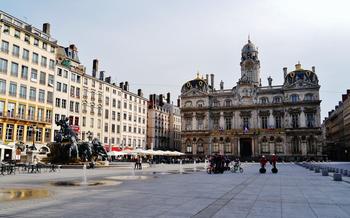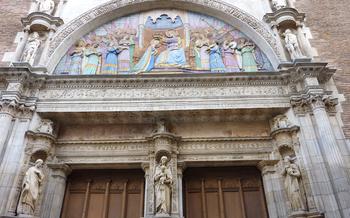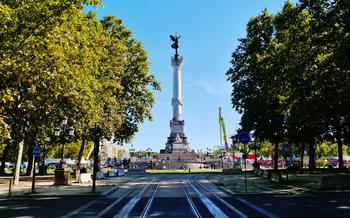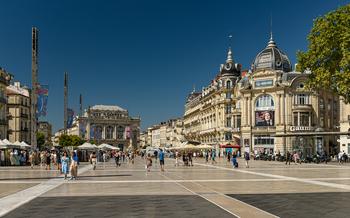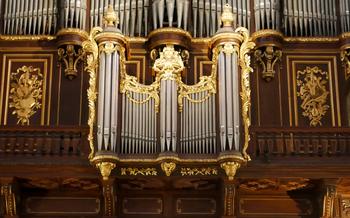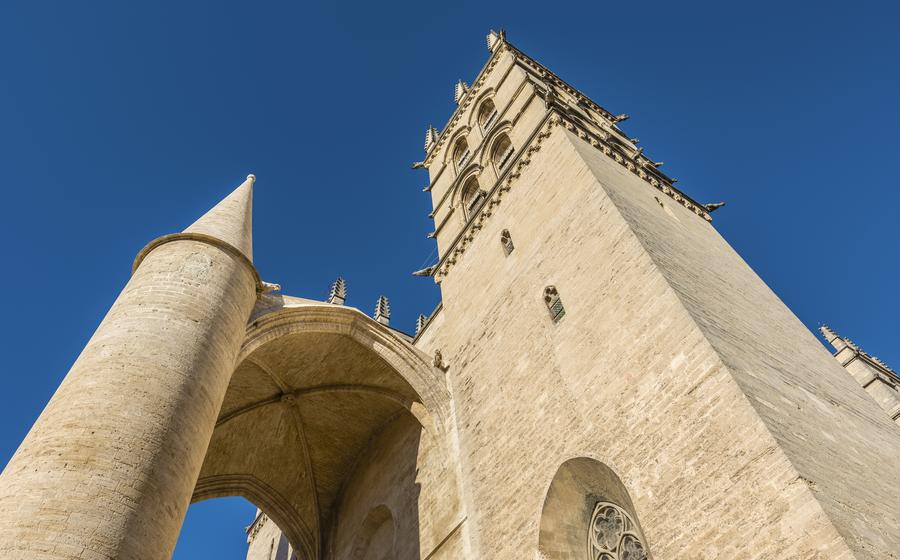
Cathédrale Saint Pierre de Montpellier
- Historical Significance
- Architectural Marvel
- The Majestic Façade: A Symphony of Stone
- Exploring the Interior
- The Organ Masterpiece
- The Tower's Tale
- Religious Relics and Artwork
- A Walk Through History
- The Cathédrale's Place in the Community
- Practical Information
- Insider's Perspective
- Nearby Attractions
- Culinary Delights: A Taste of Montpellier
- Insider Tip
Historical Significance
Montpellier's Cathédrale Saint Pierre de Montpellier stands as a testament to the city's rich and storied past, deeply rooted in Roman influences, medieval grandeur, and religious devotion. Its foundations lie in the Romanesque era, where a humble chapel once stood, serving as a sacred space for the growing Christian community. As the city flourished, so did the need for a larger and more magnificent edifice, leading to the construction of the current Gothic masterpiece. Throughout the centuries, the cathedral has undergone numerous modifications and expansions, reflecting the evolving architectural styles and the deep-seated faith of the people of Montpellier. It has witnessed countless religious ceremonies, processions, and pilgrimages, solidifying its position as a spiritual beacon for the region.
Architectural Marvel
The Cathédrale Saint Pierre de Montpellier proudly stands as a testament to the architectural prowess of the Gothic era, embodying a harmony of form and function that captivates all who behold it. Its intricate design showcases the meticulous craftsmanship and artistic vision that went into its construction.
Gothic Design: The cathedral's Gothic architecture is characterized by its pointed arches, ribbed vaulting, and flying buttresses, which not only add to its structural stability but also lend a sense of soaring height and drama to its interior.
Detailed Sculptures: The exterior of the cathedral is adorned with an array of intricately carved sculptures that depict biblical scenes, saints, and mythical creatures. These sculptures, a testament to the skill of medieval artisans, bring the stories of the Bible to life, inviting visitors to contemplate the rich history and symbolism embedded in each detail.
Stained Glass Windows: The cathedral's interior is illuminated by an array of stunning stained glass windows, which bathe the space in a kaleidoscope of colors. These windows, with their vibrant hues and intricate designs, depict religious scenes and figures, casting a sacred and awe-inspiring atmosphere within the cathedral.
The Majestic Façade: A Symphony of Stone
The façade of the Cathédrale Saint Pierre de Montpellier is a testament to the intricate artistry and devotion that went into its creation. Its grand entrance is adorned with a mesmerizing array of carvings that depict scenes from the Bible, mythological tales, and everyday life. Intricate and lifelike sculptures of saints, angels, and mythical creatures seem to come alive, inviting visitors to delve into the rich history and symbolism embedded in each detail.
At the heart of this architectural masterpiece is the central rose window, a radiant symbol of divine light and celestial glory. Its intricate stained glass panels depict scenes from the life of Christ, casting a kaleidoscope of colors that dance across the cathedral's interior. The surrounding tracery, with its delicate curves and patterns, adds an ethereal touch to the façade, creating a sense of awe and wonder.
The unique gargoyles that adorn the cathedral's exterior add a touch of whimsy and intrigue to its otherwise sacred grandeur. These fantastical creatures, with their grotesque and often humorous expressions, serve as guardians against evil spirits and symbolize the triumph of good over evil. Each gargoyle is a work of art in its own right, showcasing the creativity and imagination of the medieval artisans who brought the cathedral to life.
Exploring the Interior
Venturing inside the Cathédrale Saint Pierre de Montpellier is a journey through architectural grandeur and sacred history. The main altar, an exquisite display of craftsmanship, takes center stage, adorned with intricate carvings that narrate biblical tales. Its golden hues and elaborate details captivate the eye, inviting visitors to delve deeper into the cathedral's rich heritage.
The transepts, extending from the nave, provide a sense of spaciousness and symmetry. Their vaulted ceilings soar overhead, supported by graceful columns that create a sense of awe and tranquility. Chapels and crypts, tucked away in the cathedral's corners, offer intimate spaces for prayer and reflection. These hidden gems often house precious religious relics and artwork, whispering secrets of faith and devotion.
The Organ Masterpiece
Housed within the Cathédrale Saint Pierre de Montpellier is a masterpiece of musical craftsmanship—the grand organ. Its origins date back to the 16th century, when it was initially constructed by the renowned organ builder, Jean de Joyeuse. Over the centuries, it has undergone numerous renovations and expansions, each adding to its grandeur and complexity.
The organ's intricate carvings, depicting biblical scenes and celestial motifs, are a testament to the skill and artistry of its creators. Each pipe, each knob, and each pedal tells a story, contributing to the overall symphony of the instrument.
The organ is not merely a decorative element; it is a living, breathing entity that fills the cathedral with its majestic sounds during religious ceremonies and special events. Its deep, resonant tones reverberate through the vaulted ceilings, creating an atmosphere of awe and spirituality.
For music enthusiasts, attending an organ concert at the Cathédrale Saint Pierre is an unforgettable experience. The acoustics of the cathedral allow the organ's melodies to soar and dance, enveloping the audience in a sea of sound. The organist's virtuosity, coupled with the instrument's grandeur, creates a musical journey that transcends time and space.
The Tower's Tale
The Cathédrale Saint Pierre de Montpellier's tower, a striking landmark that dominates the city skyline, is not just a visual marvel but also a testament to the cathedral's rich history. Its construction began in the 14th century but faced numerous challenges and interruptions due to wars and financial constraints. Despite these setbacks, the tower was finally completed in the 16th century, standing as a symbol of perseverance and architectural prowess.
The tower's interior features a spiral staircase that leads visitors to the observation deck, offering breathtaking panoramic views of Montpellier and its surroundings. From this vantage point, one can admire the intricate details of the city's rooftops, the vibrant squares, and the distant countryside. The tower also holds hidden treasures, such as medieval graffiti and inscriptions left by past visitors, providing a glimpse into the lives of those who came before.
Religious Relics and Artwork
Cathédrale Saint Pierre de Montpellier houses a collection of religious relics and artwork that holds great spiritual and historical significance. Ancient artifacts, sacred objects, and intricate paintings and sculptures adorn the cathedral's interior, offering a glimpse into its rich religious past. Among the most revered relics is a fragment of the True Cross, believed to be a part of the cross on which Jesus Christ was crucified. Enshrined in a silver reliquary, the relic attracts pilgrims and visitors seeking spiritual connection.
The cathedral's walls are adorned with stunning paintings depicting biblical scenes and the lives of saints. These artworks, created by talented local artists, bring the stories of faith to life, inviting visitors to contemplate their religious significance. The stained glass windows, with their vibrant colors and intricate designs, cast a majestic glow upon the interior, creating an atmosphere of awe and wonder. Each window tells a different biblical story, adding to the cathedral's rich visual narrative.
A Walk Through History
The Cathédrale Saint Pierre de Montpellier stands as a testament to the rich history of the city, inviting visitors to embark on a journey through time. As you stroll through the ancient streets surrounding the cathedral, you'll encounter a treasure trove of historical landmarks that tell the story of Montpellier's past.
Explore the medieval fortifications, remnants of a time when the city was a strategic military stronghold. Admire the elegant mansions and hôtels particuliers, showcasing the city's architectural heritage from the Renaissance and beyond. Discover hidden courtyards and charming squares, each with its own unique character and stories to tell.
Immerse yourself in the cultural tapestry of Montpellier, where art, music, and literature intertwine. Visit the Musée Fabre, home to a remarkable collection of paintings, sculptures, and decorative arts. Attend a concert or performance at the Opéra de Montpellier, renowned for its world-class acoustics and diverse repertoire.
As you wander through Montpellier's historic streets, let the city's rich past come alive. Each corner you turn, each building you encounter, holds a piece of the city's captivating story, waiting to be discovered. Embrace the opportunity to step back in time and experience the vibrant history of Montpellier firsthand.
The Cathédrale's Place in the Community
The Cathédrale Saint Pierre de Montpellier is not just a historical landmark but also an active part of the local community. It serves as a spiritual center for the city's Catholic population, hosting regular religious ceremonies, masses, and special events throughout the year. The cathedral's grand interior provides a sacred and serene atmosphere for worshippers to come together and connect with their faith.
Beyond its religious significance, the Cathédrale Saint Pierre de Montpellier is also a cultural hub for the city. It frequently hosts concerts, exhibitions, and other cultural events, showcasing the talents of local artists and musicians. These events provide an opportunity for the community to gather, appreciate the arts, and celebrate the city's rich cultural heritage.
The cathedral also plays a role in local celebrations and festivals. During the annual Fête de la Saint Pierre, the city comes alive with festivities, processions, and markets, centered around the cathedral. This vibrant celebration honors the patron saint of Montpellier and brings the community together in a spirit of joy and unity.
Whether it's through religious ceremonies, cultural events, or community celebrations, the Cathédrale Saint Pierre de Montpellier remains an integral part of the city's social fabric, fostering a sense of belonging and shared identity among its residents.
Practical Information
To get to the Cathédrale Saint Pierre de Montpellier, you can easily walk from the city center or take public transportation. The cathedral is open to visitors daily, with varying hours depending on the season. Admission to the cathedral is free, but donations are welcome.
If you want to delve deeper into the history and significance of the cathedral, guided tours are available for a small fee. These tours are offered in several languages and provide insightful commentary on the cathedral's architecture, art, and religious importance. Audio guides are also available for self-guided tours.
Insider's Perspective
To fully appreciate the Cathédrale Saint Pierre de Montpellier, consider visiting during the early morning or late afternoon when the light beautifully illuminates the stained glass windows, casting a magical glow on the interior. Take your time to wander around the cathedral, discovering hidden corners and details that often go unnoticed by hurried visitors. Look for the small chapel dedicated to Saint Roch, the patron saint of Montpellier, which contains a beautiful altarpiece depicting his life.
If you're lucky, you might catch a glimpse of the cathedral's resident cat, affectionately named "Minou," who often makes an appearance and adds a touch of charm to the sacred space. Also, keep an ear out for organ concerts, which are occasionally held in the cathedral and offer a unique opportunity to experience the majestic sounds of the instrument within its hallowed halls.
Nearby Attractions
Montpellier is a treasure trove of cultural and historical gems waiting to be explored. Just a short stroll from the Cathédrale Saint Pierre de Montpellier, you'll find an array of attractions that will captivate your senses.
Place de la Comédie: Located in the heart of the city, this bustling square is a vibrant hub of activity. Marvel at the majestic Opéra Comédie, a stunning example of 19th-century architecture. Admire the elegant fountain, a focal point of the square, and soak in the lively atmosphere as street performers entertain the crowds.
Promenade du Peyrou: Escape to the tranquility of this beautiful park, offering breathtaking panoramic views of Montpellier and the surrounding countryside. Stroll along the tree-lined paths, admire the impressive aqueduct, and capture the essence of the city from this elevated vantage point.
Musée Fabre: Immerse yourself in the world of art at this renowned museum, home to an impressive collection of paintings, sculptures, and decorative arts. Admire works by renowned masters such as Delacroix, Courbet, and Monet, and trace the evolution of artistic styles throughout the ages.
Culinary Delights: A Taste of Montpellier
Montpellier's culinary scene is a vibrant tapestry of flavors, aromas, and textures, offering a delectable journey through the region's rich gastronomic heritage. From bustling local markets brimming with fresh produce, artisanal cheeses, and fragrant herbs to cozy restaurants serving traditional and contemporary dishes, Montpellier is a foodie's paradise.
Indulge in the iconic flavors of Brandade de Morue, a creamy codfish puree, or savor the delicate sweetness of Tielle Sètoise, a seafood-filled pastry that's a local specialty. Don't miss the chance to try the region's famous Picpoul de Pinet wine, a crisp and refreshing white that pairs perfectly with fresh seafood and local delicacies.
For an authentic culinary experience, visit the Marché du Lez, a vibrant market where you can mingle with locals and browse an array of fresh produce, artisanal bread, and specialty products. Join a cooking class to learn the secrets of traditional Occitan cuisine and create your own delicious dishes using regional ingredients.
Food festivals and events are a highlight of Montpellier's culinary calendar, where you can sample regional specialties, participate in cooking demonstrations, and soak up the lively atmosphere. Don't miss the Festival International de la Gastronomie, held annually in September, which showcases the best of French and international cuisine.
Whether you're a food enthusiast or simply looking for a delightful culinary experience, Montpellier has something to satisfy your taste buds. Embrace the local flavors and indulge in the region's rich gastronomic heritage.
Insider Tip
-
Photography enthusiasts will delight in capturing the intricate details of the cathedral's façade, the grandeur of its interior, and the panoramic cityscape from the tower. Arrive early or stay late to avoid crowds and capture the best light for your shots.
-
Venture off the beaten path and explore the charming cobblestone streets surrounding the cathedral. Discover hidden courtyards, quaint cafés, and independent boutiques that offer a glimpse into Montpellier's vibrant local culture.
-
For a truly unique experience, attend one of the many cultural events or religious ceremonies held at the cathedral throughout the year. Immerse yourself in the sacred atmosphere, listen to the enchanting sounds of the organ, and witness the rich traditions that keep the spirit of this historic landmark alive.

